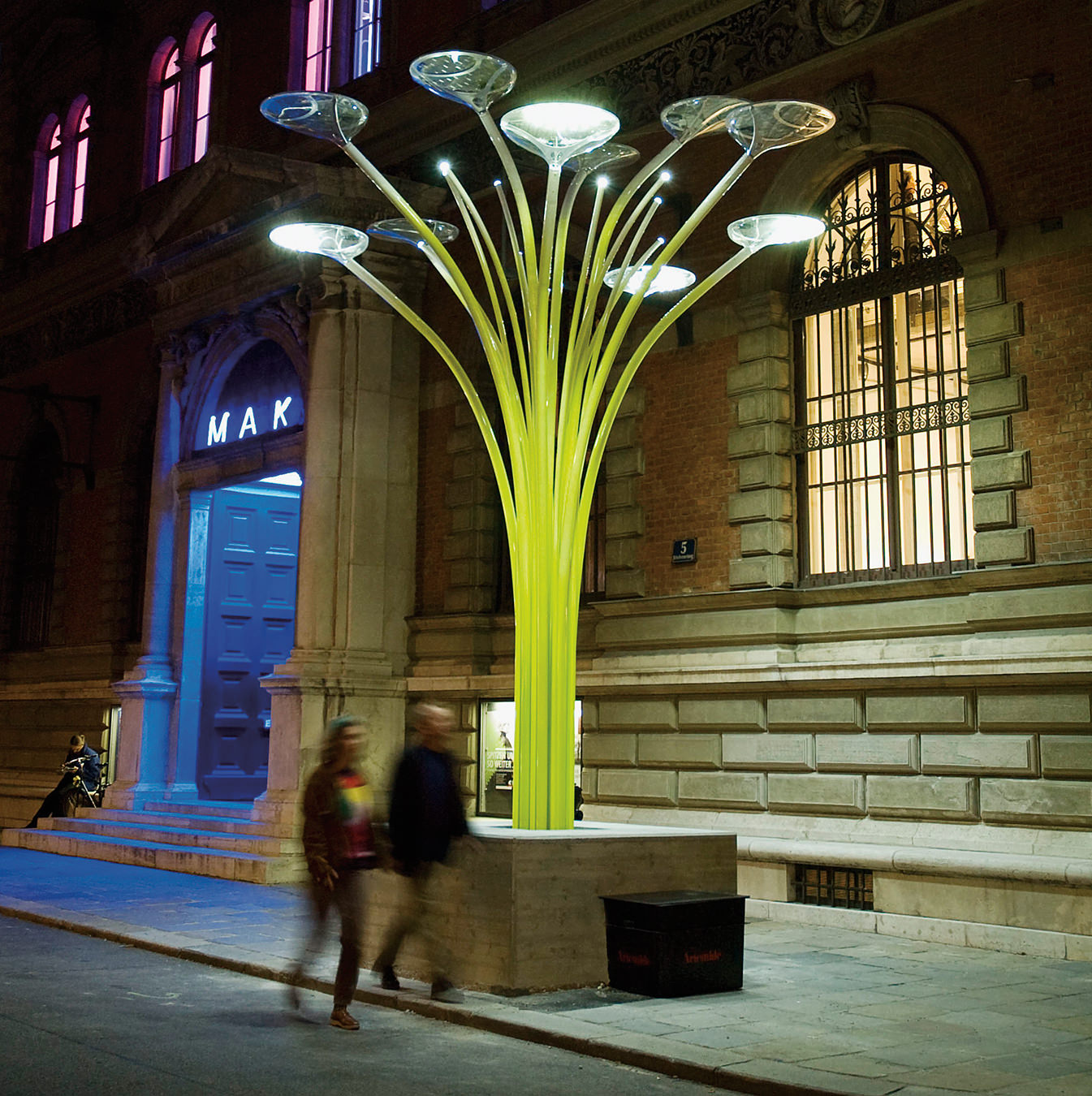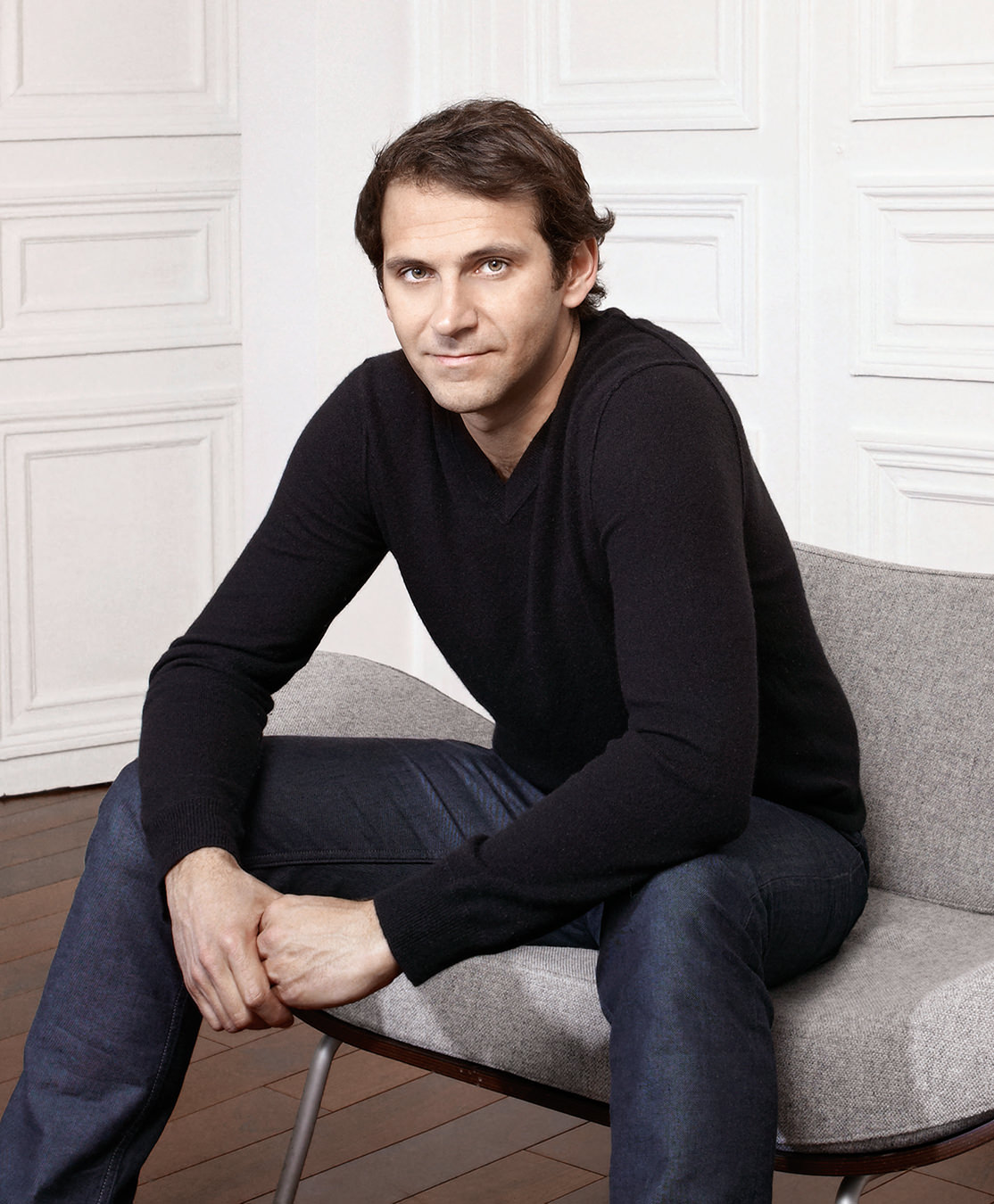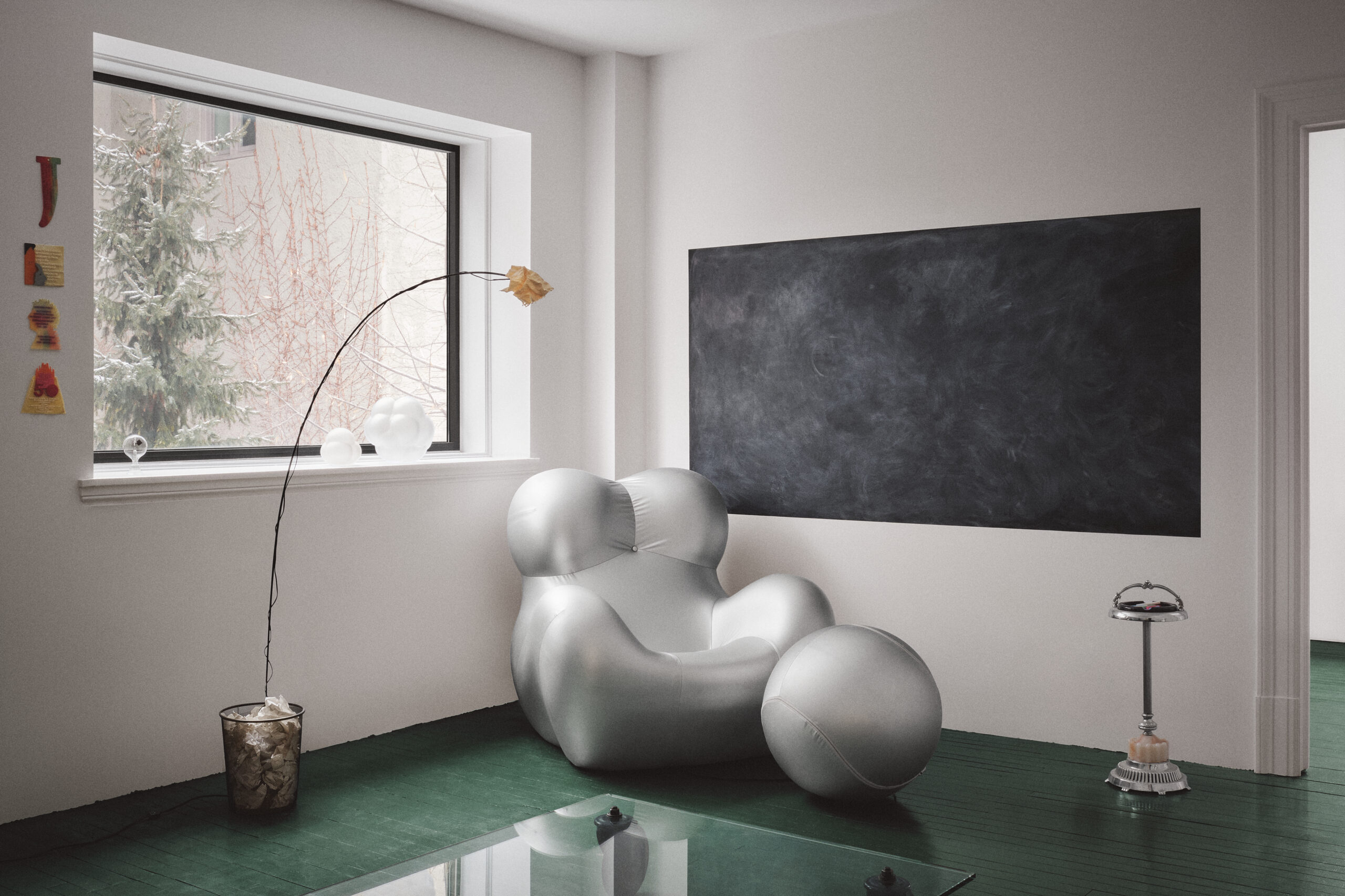
In his apartment and workshop in Montreal, Fusaro’s pieces are intermingled with work from designers he admires, like his idées ratées lamp alongside Gaetano Pesce’s La Mamma Up 5 chair and Up 6 ottoman.
Montreal Industrial Designer Chris Fusaro Balances Efficiency, Aesthetic, and Replicability
Form and function.
Like many young creatives, Montreal designer Chris Fusaro excelled in his high school art classes, so he took industrial design in CEGEP, letting business acumen guide his creative activities. “It seemed like a good mix of being able to get a job and still practising those creative skills in a practical way,” he remembers. “And then I really liked it.” He briefly studied industrial design in Vancouver but found his courses similar to those he’d already taken and switched to sculpture at Concordia University. Studying fine art in an academic setting provided not only context into the foundations of the art world but also freedom: “I got to make whatever I wanted, so I started making chairs that I wanted to make,” he says.
He launched his namesake studio in 2019, focusing on striking experiments with form, fabrication, and materiality. With his ec1 chair, a wavy red, black, grey, and white colour-blocked mass that fits the human form, Fusaro was one of 30 finalists for the inaugural Fabrique 1840 award offered by Simons to spotlight Canadian artisans and makers, earning the chair a place on the retailer’s website. The product description highlights that the undulating fibreglass and bioresin materials honour “the history of Quebec design in the 1970s and its progression up to the present day.”
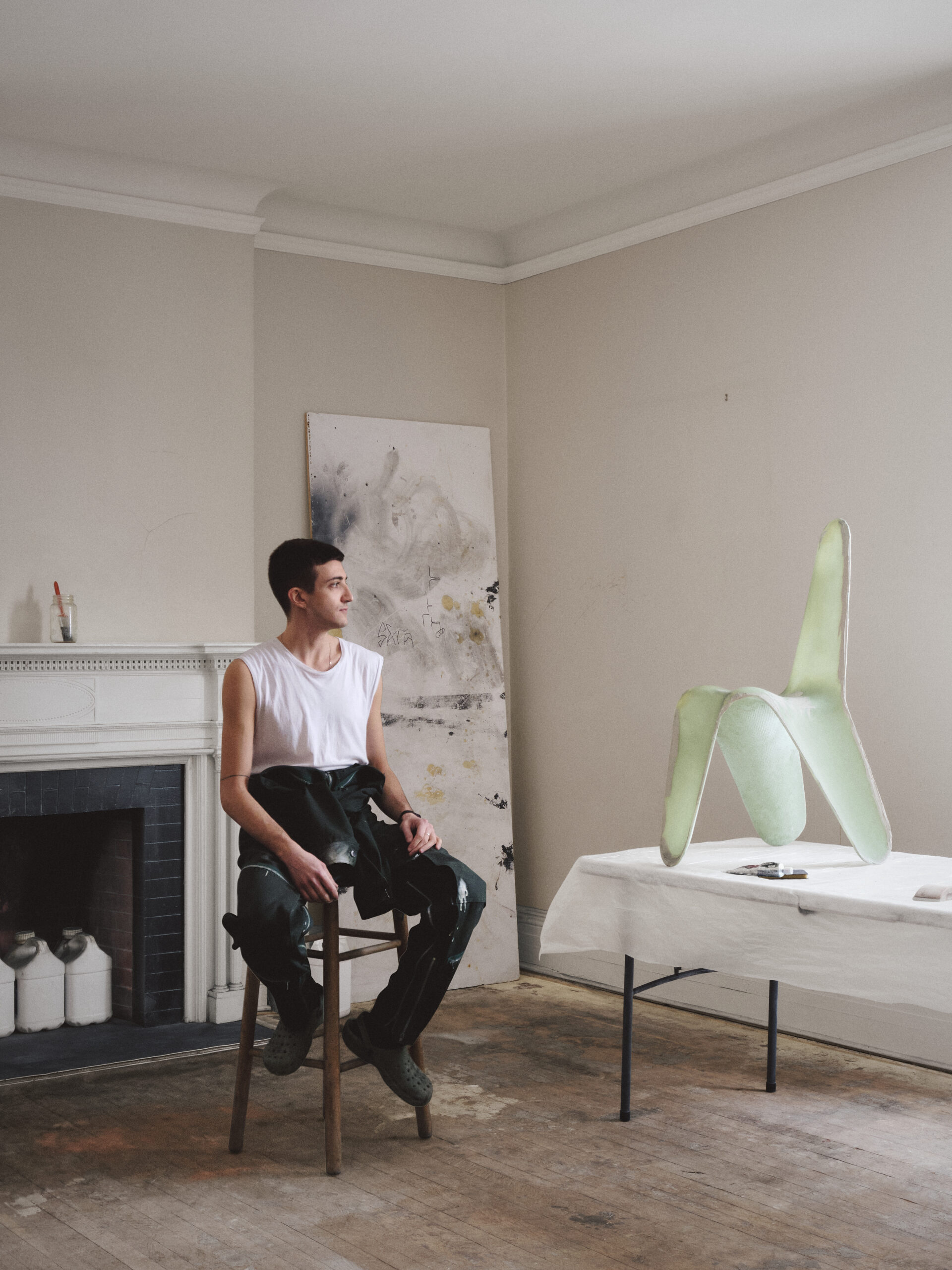
Fusaro’s design ethos informs his exploration with materials. He strives for lightness (“Don’t make something heavy if it doesn’t need to be”) and generally gravitates toward mono materiality, which allows an organic process. The shapes are simple but expressive, relying on eccentric silhouettes that still make sense. “It’s also not styled for the sake of style. I’m not like, ‘Oh, I want to design something crazy,’” the Italian Canadian designer says. “It starts from, I feel, a good place, good values of, like, this has to be easy to make. I feel like that’s kind of virtuous a little bit in that, like, we’re making something new, we’re reinventing this process.”
After spotting Fusaro’s lipstick-red tripod chair, a playful modern seat somewhere between a stool and a chair, in Colen Colthurst’s collection, Toronto stylist Jackie McKeown commissioned a kelly green version for ECCO’s new concept store in downtown Toronto. “I wanted to include artists whose work feels both unique and leaks into the elevated quirkiness of the brand,” says McKeown, who was tapped as the creative director of ECCO’s gallery-like Ossington boutique. “The chair offsets the minimalistic interior while being a beautiful example of form and function in the space.”
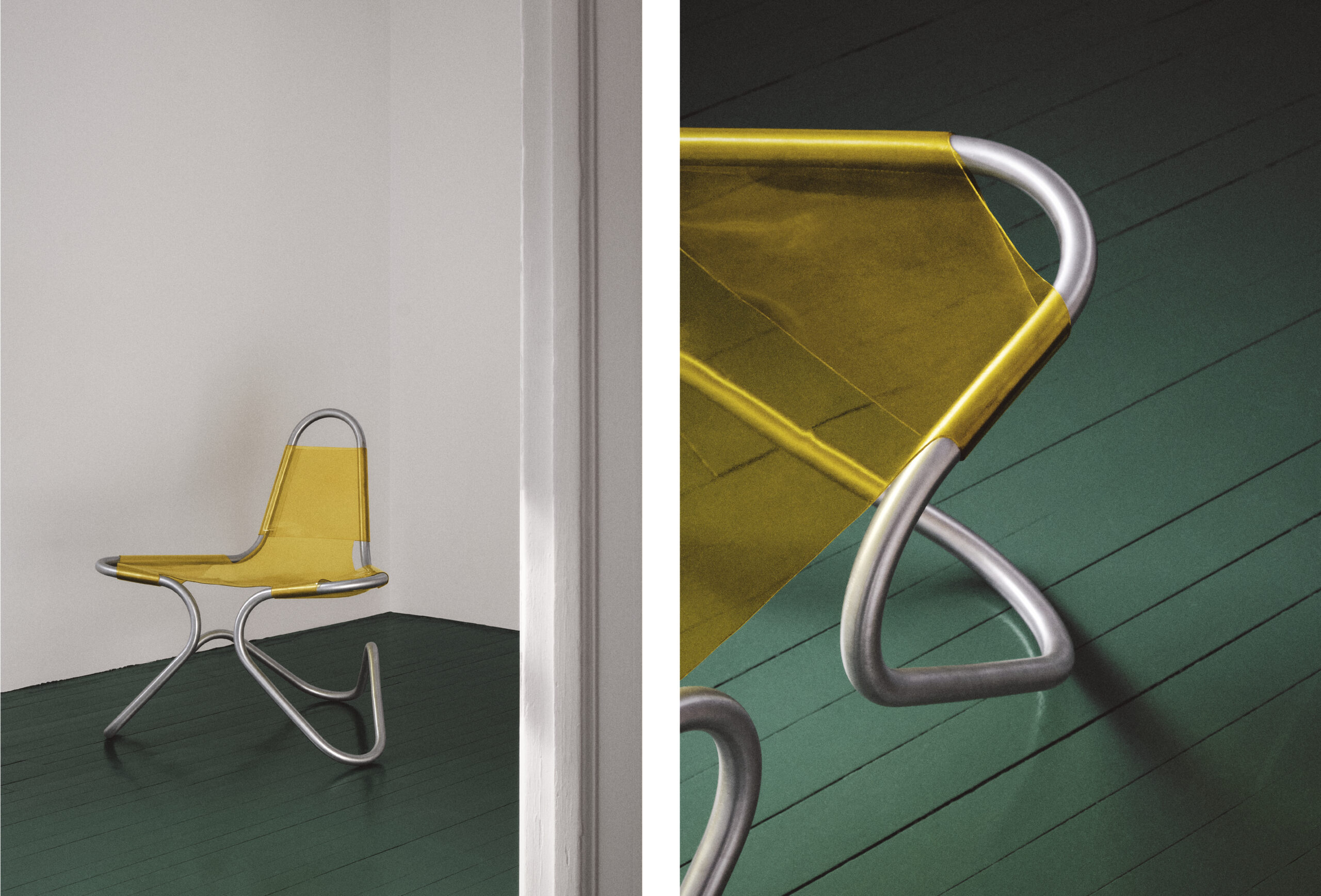
While Fusaro is influenced aesthetically by many artists and designers, he also seeks out those from whom he can study the mechanics of commercial success. “I’m very interested by the way people run their businesses, especially artists, designers, and architects,” the 29-year-old designer says. “Like, how are you keeping this machine going with constant new projects?”
_________
For Chris Fusaro, the intersection of art and commerce is essential.
His one-off designs have garnered him a following, but Fusaro wants his work to be accessible—and sellable. He picked up a few tips on building a formidable business while working for Gaetano Pesce, the legendary Italian designer who most recently created 400 unique resin chairs for the Bottega Veneta spring 2023 show. From Pesce and others, he studied how people in the industry conduct business, from getting gigs to interviews to professional relationships. “It really helped me kind of map out who’s who and how things work,” he says.

With his ec1 chair, a wavy red, black, grey, and white colour-blocked mass that fits the human form, Fusaro was one of 30 finalists for the inaugural Fabrique 1840 award offered by Simons to spotlight Canadian artisans and makers, earning the chair a place on the retailer’s website.
Fusaro applies what he learns to his own work. But while he takes inspiration from Pesce and French designer Philippe Starck’s practices, he’s quick to note he’ll likely have to carve his own path as a Canadian designer. The “European way” he describes involves industrial designers collaborating with companies while also making works for galleries. “Canada’s not like that. It’s not structured like that,” he says. “There’s very little collaboration with companies.” Tapping into both industries means more diverse income streams and more financial security. He cites Toronto-based companies like Umbra or Nienkämper as promising exceptions that rely on design collaborations.
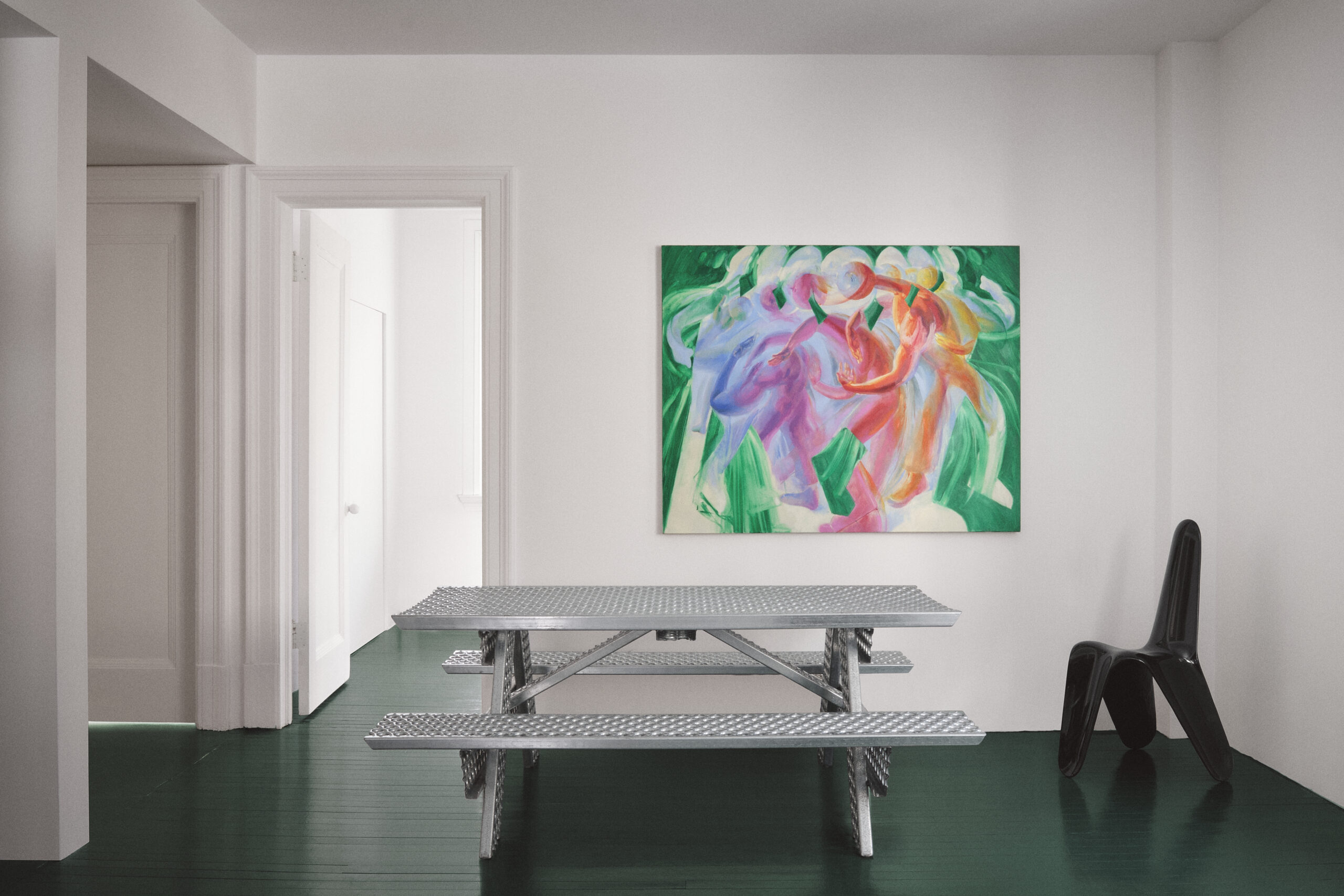
Fusaro’s contemporary art collection includes Developer by Montreal’s Alexa Hawksworth, pictured alongside his own work, grip channel table and model 3468.
For Fusaro, the intersection of art and commerce is natural—essential, even. He is as committed to his creative practice as he is to building a commercially successful business —an important goal for a young designer. So what’s his design approach? “I feel like it’s being defined every time I do something new,” he says. “I’m actively trying to define it, too, [but] I feel like I don’t really have to.” But there is a consistent thread in his work: a quest for efficiency and replicability. “I feel like what I’m doing is always kind of revolving around the moulded object, something that’s reproducible.” Fusaro sees an ability to mass produce his designs as a necessary part of the industry, using moulds as a “template for creative thinking.”
Speaking of reproducible objects, he is starting to produce what he calls sculptural kitchenware, a line of bowls, strainers, and spoons. Each item is made from different types of pasta that are cast in bronze, welded together, and then polished and nickel plated to be fully functional. His first bronze prototype of a pasta strainer made using farfalle, bow-tie pasta was a success. Approaching experimental projects like this one with curiosity and a tolerance for trial and error, he says, “I want to make 100 of these. I want them to be everywhere.”
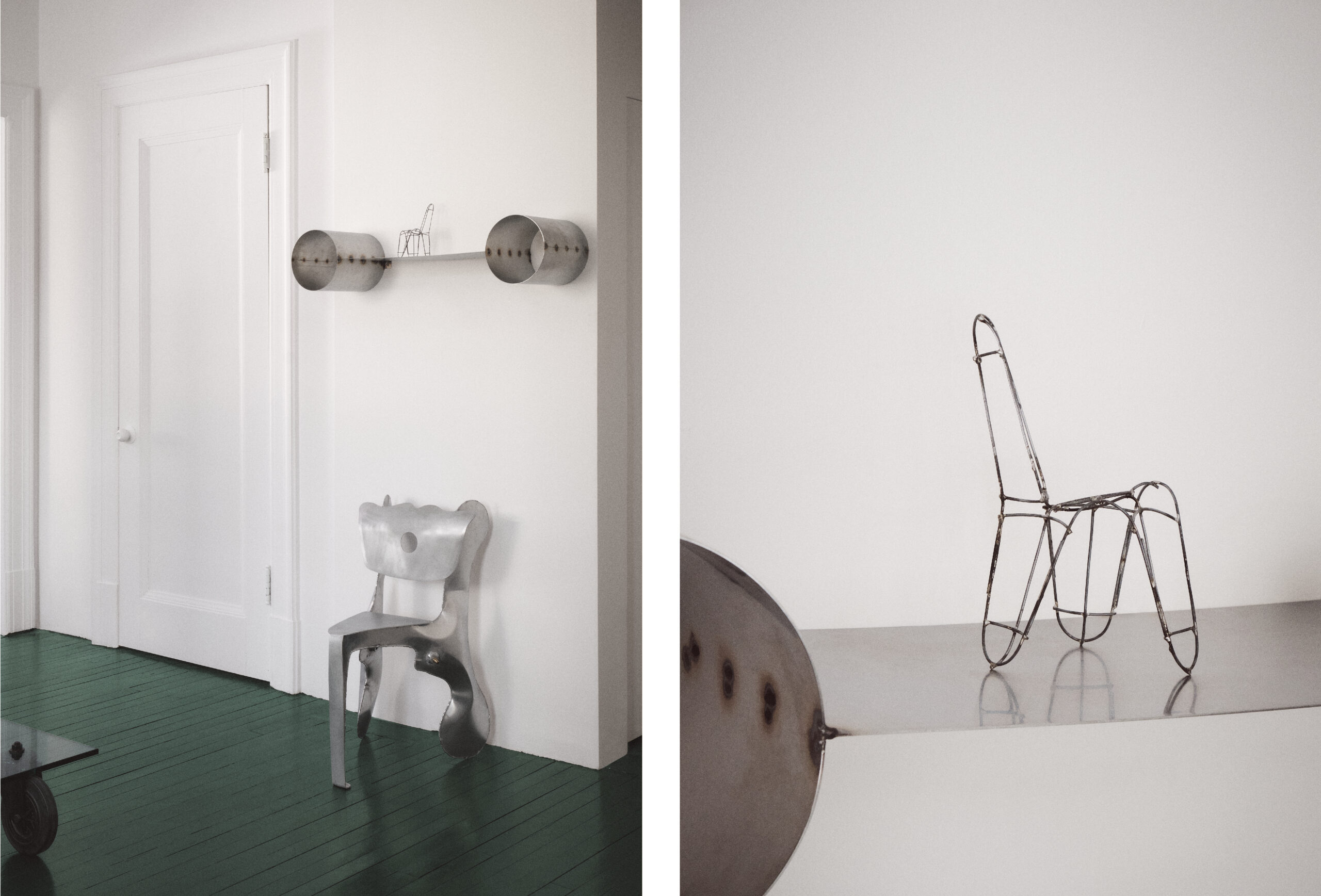
Silver chair and shelf by Canadian designer Zachary Besner (left).



